Whether you’re navigating the terrain from your vehicle to the water’s edge or transporting your kayak around a campsite, kayak wheels, also known as kayak carts or trolleys, can be a kayaker’s best friend. These handy tools are designed to help you easily move your kayak over various surfaces without the strain of carrying it. While the basic concept of using kayak wheels may seem simple enough, understanding the right techniques can go a long way in ensuring your kayak’s safety and the longevity of the wheels. Here, we’re going to dive deep into the two primary methods of placing your kayak onto your wheels.
Method 1: This first way is to lean the wheels to the front
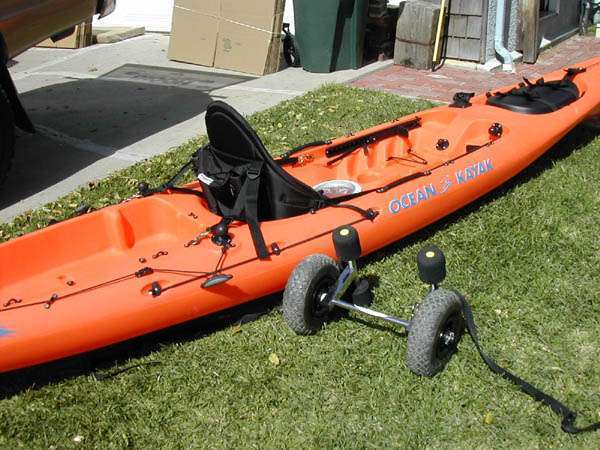
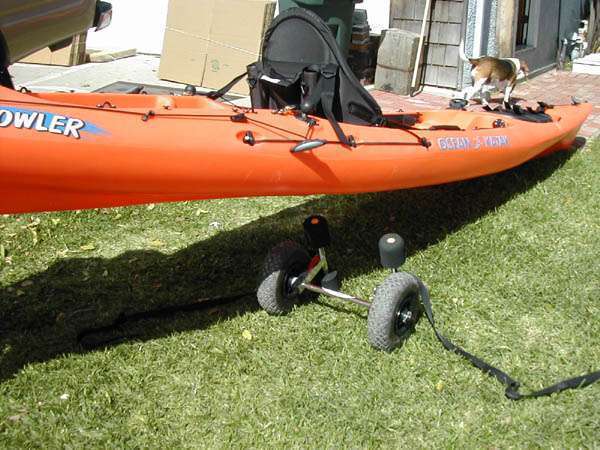
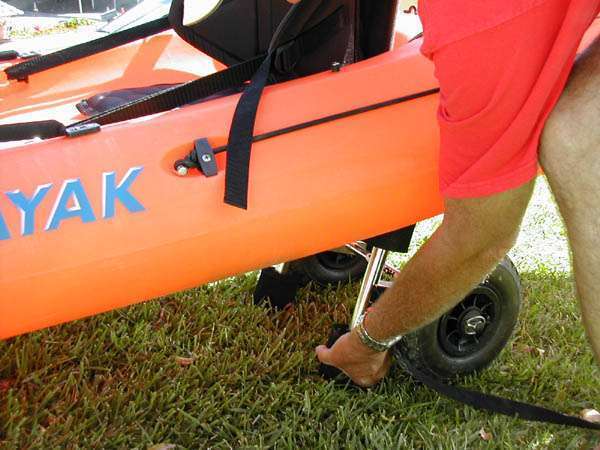
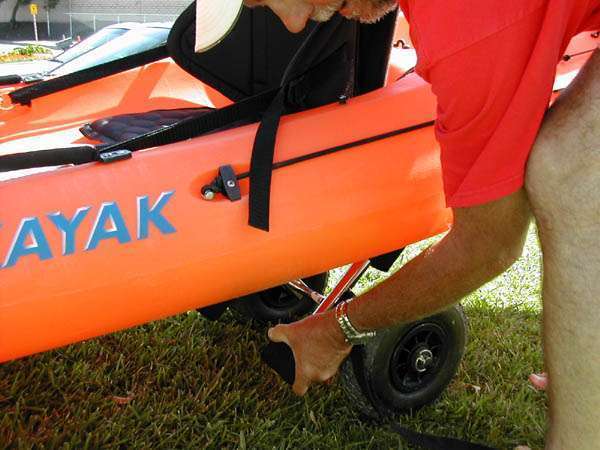
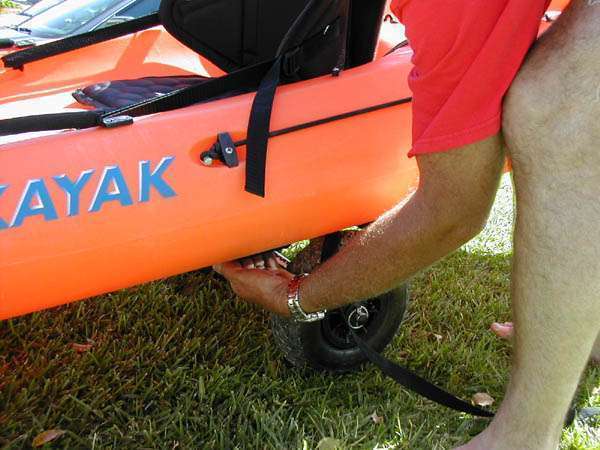
To perform this method, you first need to understand your kayak’s balance point. This is typically the area at the center of the kayak’s length where the weight is evenly distributed. Placing the wheels at this balance point will ensure that your kayak remains stable and secure on the wheels.
Here’s the step-by-step guide on how to achieve this:
Step 1: Lean your kayak wheels to the front. Position the wheels near the balance point of your kayak, with the platform of the wheels tipped upwards towards the front of the kayak. Ensure the wheels are on a stable surface to prevent them from slipping.
Step 2: Grab the front pads and lift pushing the wheels into place. Hold onto the front pads or handles of your kayak and lift it just enough to place it on top of the tipped wheels. This is where understanding your kayak’s balance point comes into play. Ensure that the kayak’s balance point aligns with the center of the wheels’ platform.
Step 3: Gently lower the kayak onto the wheels, letting the weight of the kayak push the wheels back into an upright position. Make sure the kayak is sitting securely on the wheels and is balanced.
Method 2: Lift kayak onto the wheels.
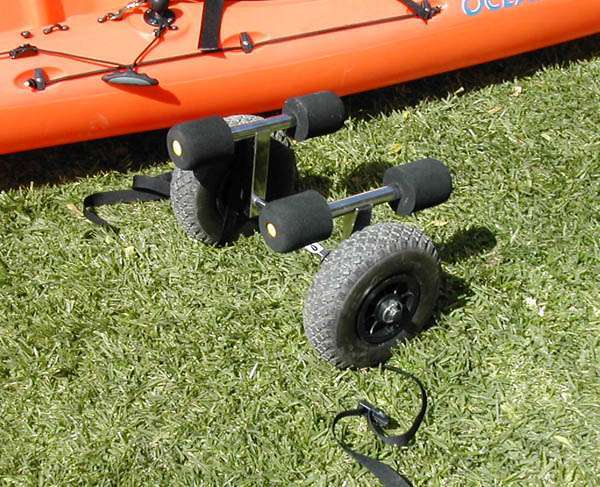
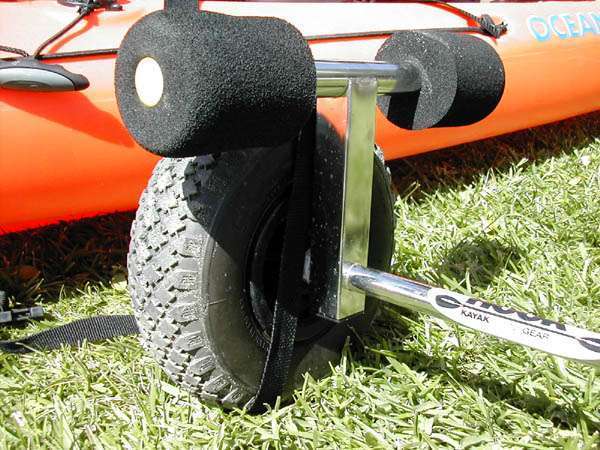
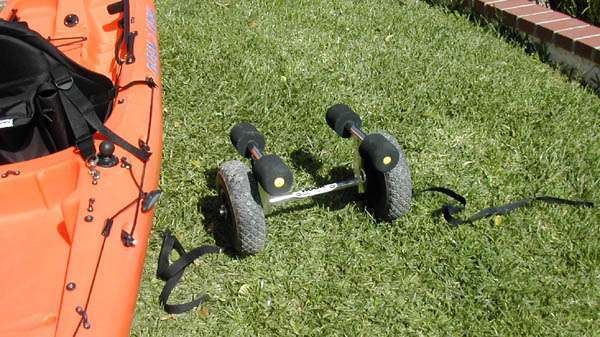
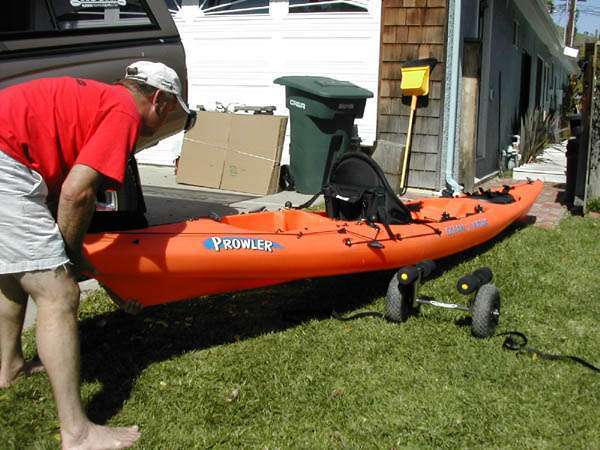
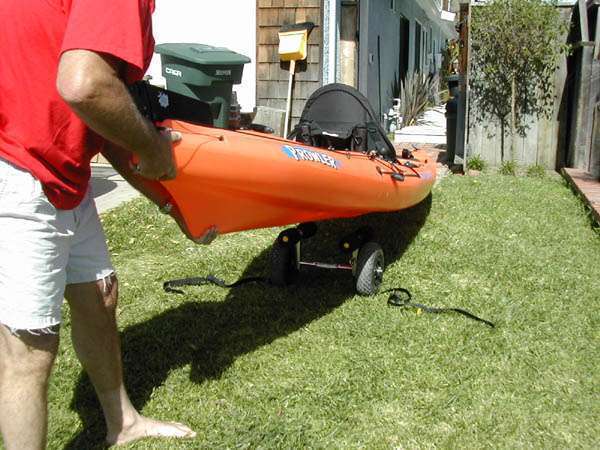

This technique utilizes the strength of the wheel’s straps to hold the wheels in place while you lift the kayak onto them. The straps should be adjustable to accommodate different kayak sizes and should be made of durable material to handle the weight of the kayak.
Step-by-step guide:
Step 1: Position the wheels in an upright position next to the kayak’s balance point. Ensure the straps are unfastened and hanging loose.
Step 2: Lift the kayak onto the wheels. This can be done by holding onto the kayak’s handles or any other secure grip points. It’s always safer to do this with a partner, especially with heavier kayaks, to avoid any potential injury or damage to the kayak.
Step 3: Once the kayak is resting on the wheels, ensure it is balanced and centered. The balance point of the kayak should align with the center of the wheels’ platform.
Step 4: Attach straps when the kayak is resting in the correct position on the wheels. Fasten the straps around the kayak, making sure they are snug but not overly tight. The straps should be secure enough to hold the kayak in place without causing any damage.
Mastering the art of working with your kayak wheels not only makes your kayaking adventures more enjoyable but also ensures the longevity of your equipment. Remember, as with any skill, practice makes perfect. So, strap in, roll out, and conquer the terrains with your kayak wheels!
